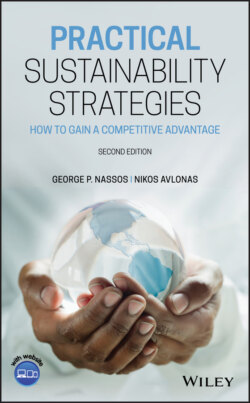Читать книгу Practical Sustainability Strategies - George P. Nassos - Страница 42
SCIENTIFIC RATIONALE FOR THE NATURAL STEP
ОглавлениеThere are four basic scientific principles that form the foundation for TNS framework [1]:
1 Matter and energy cannot be created or destroyed (according to the first law of thermodynamics and the principle of matter conservation). This means that the overall mass of the earth remains constant. We have the same volume of matter now as we did 4.5 billion years ago. Therefore, matter—or the earth's resources—only changes its form.
2 Matter and energy tend to disperse (according to the second law of thermodynamics). This means that sooner or later matter that is introduced into society will be released into natural systems. This is the underlying mechanism behind our experience that energy and material transformation operate to reduce the available energy in the system and increase the dissipation of matter throughout the system.
3 Material quality can be characterized by the concentration and structure of matter. What we consume are the qualities of matter and energy—the concentration, purity and structure of matter, and the ability of energy to perform work. Because nothing disappears and everything tends to disperse, a carpet turns to dust and a car turns to rust, and not the reverse. Dust does not reassemble into a carpet or rust into a car. As matter disperses, it loses its concentration, purity and structure.
4 The net increase in material quality on earth is produced by sun-driven processes. Photosynthesis is the only large-scale producer of material quality. While the earth is a closed system with regard to matter, it is an open system with respect to energy. This is the reason why the system has not already run down with all of its resources being converted to waste. The earth receives light from the sun and emits heat into space.
In addition to these scientific principles, TNS conditions are influenced by the cyclic principle that can be summarized as follows: (i) waste must not systematically accumulate in nature and (ii) the reconstitution of material quality must be at least as large as its dissipation.
